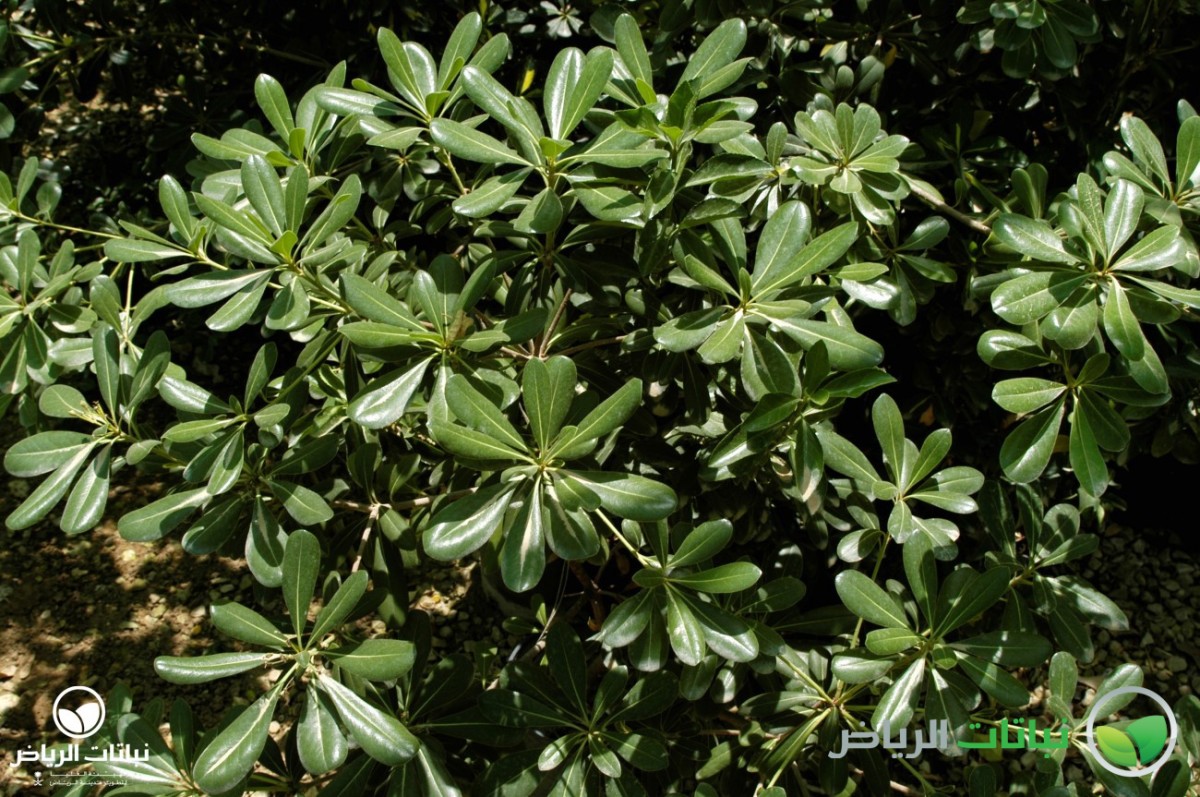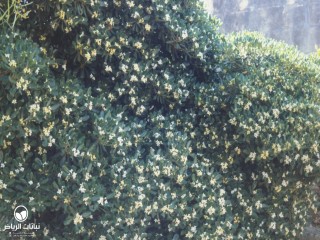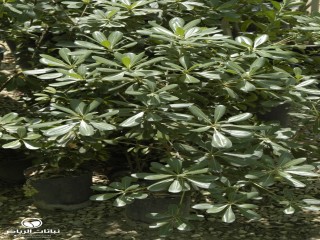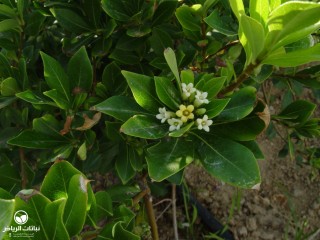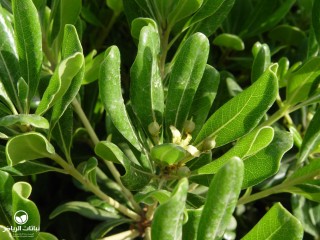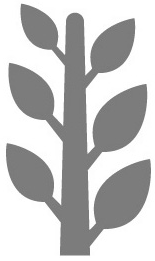Riyadh Plants
Mock Orange
Pittosporum tobira is also known as Mock Orange. The shrub is native to central China, Japan and Korea. It prefers a Mediterranean to subtropical climate. It grows to a height of between 2 and 5 metres, with a spread of up to 4 metres. The shrub is usually regularly rounded in shape, and the foliage is evergreen. The leaves are dark green on top and light green underneath. The leaf shape is convex-obovate and entire, and the leaves are arranged alternately. The flowers are white or pale yellow, with a pleasant fragrance. The fruits are pale olive-green round capsules with a size of 1 cm. Maintenance requirements are minimal; occasionally, pruning will lead to a denser growth. Propagation is by sowing and pricking, by cuttings or through self-seeding. Mock Orange does not like stagnant water; however, it needs medium irrigation with a low salinity content. Like all evergreen plants which grow in Mediterranean climates, P. tobira loves a microclimate with sufficient air humidity. Accordingly, it is vulnerable to desiccation. It is, however, frost-tolerant. This bird- and bee-attracting plant will provide shelter and screens in parks or private sheltered gardens. Pittosporum can be pruned as a topiary, and is useful in pots. Considered should be the fruit drop which is maybe not desired next to pathways. The shrub will be a recommended as dominant plant or as grouped planting and also as a flowering hedge. Occasionally seen in Arriyadh, in the Diplomatic Quarter for example, P. tobira often shows signs of sunburn and chlorosis.
